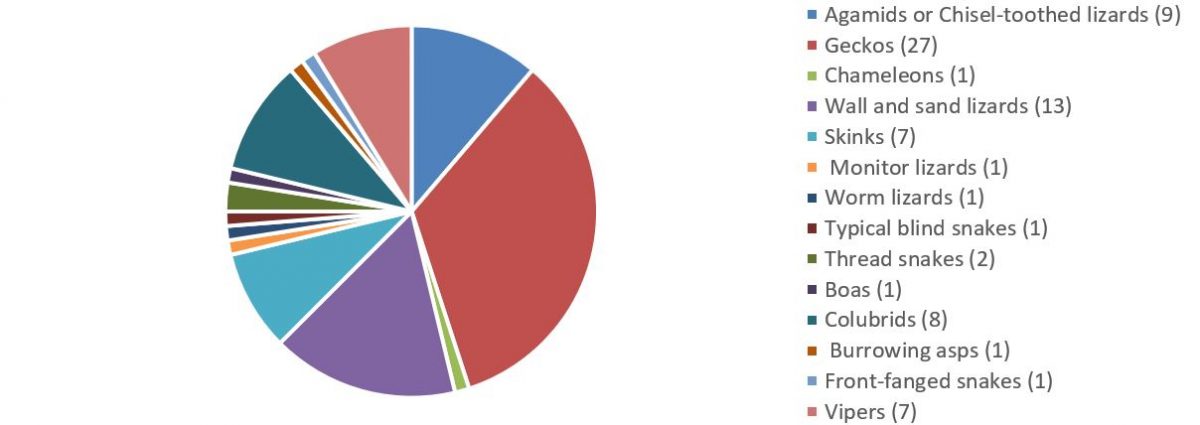Author(s) of journal article being reviewed: Gardner, A. S.
Title of journal article being reviewed: “Mapping the terrestrial reptile distributions in Oman and the United Arab Emirates.”
Year of article: 2009
Journal name: ZooKeys
Volume/Page Numbers: 31/165-177
What is the research question the author(s) are trying to address?
- The terrestrial reptile fauna of Oman and the United Arab Emirates includes a single species of worm lizard and more than seventy-five species of snakes and lizards (Gardner, 2009).
- There are no accurate and available maps of their ranges of distribution, and the existing distribution data relies on published accounts and scattered locations of museum specimens.
- The authors are aimed at producing distribution ranges maps of those species (Gardner, 2009).
- These maps will be useful for an extended number of applications.
Describe what methods the author(s) used to collect data.
Data used for this research was collected from museum records and various unpublished and published accounts from several different sources. Initially, these records were made by numerous visiting and resident herpetologists, natural historians, and ecologists over the last forty years, as well as the author himself over the last 20 years (Gardner, 2009).
Describe the results the author(s) presented in your format.

What were the limitations of the study?
- The data used by the author was collected by various scientists, and it is impossible to prove that all sources are trustworthy (Gardner, 2008).
- Another limitation of the study is the question of whether the records were made based on traces and tracks.
- Older data may only be mapped to within one kilometer (Gardner, 2009).
What were the overall conclusions the author(s) came to?
Using the collected data and reports, the author managed to create an extended map of 4.683 records of terrestrial reptiles in Oman and the UAE. According to Gardner (2009), this map should and will be extended further and has the potential of being helpful in various areas and fields.
How has the current study added to the knowledge of the subject to the science community?
This study is the first to present an extended and as accurate as possible map of the distribution of terrestrial reptiles in Oman and the UAE (Egan, 2007). It may be useful for studying endemism and endangered species and species of the medical importance of that area, as well as help ecology and evolution scientists (Gardner, 2009).
How could this study be relevant to the ecology of the UAE? If your study is about the UAE, how could it be relevant to another country?
This study of species distributions is an example of how such a map may be created and used for ecology and evolution. In other countries, such maps may allow questions to be formulated to test scientific and ecological theories.
Create a bibliography of all the references you used
Egan, D. (2007). Snakes of Arabia: A field guide to the snakes of the Arabian Peninsula and its shores. Motivate Publishing.
Gardner, A. S. (2008). The terrestrial reptiles of the United Arab Emirates: Herpetological history, zoogeography, and conservation. Environment Agency Abu Dhabi.
Gardner, A. S. (2009). Mapping the terrestrial reptile distributions in Oman and the United Arab Emirates. ZooKeys, 31, 165–177.
Show evidence of consultation with the librarian (or use of ZU Library electronic resources)
Gardner’s article discussed in this paper review project was found at ZU Library electronic resources.
References
Egan, D. (2007). Snakes of Arabia: A field guide to the snakes of the Arabian Peninsula and its shores. Motivate Publishing.
Gardner, A. S. (2008). The terrestrial reptiles of the United Arab Emirates: Herpetological history, zoogeography, and conservation. Environment Agency Abu Dhabi.
Gardner, A. S. (2009). Mapping the terrestrial reptile distributions in Oman and the United Arab Emirates. ZooKeys, 31, 165–177.